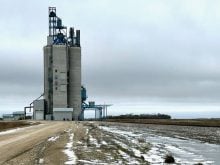REGINA — Changes to the 1994 Livestock Feed Insurance Program include the cancellation of the livestock grazing option.
The program ran up a large deficit between 1989 and 1993, said Cam Swan, research analyst for Sask. Crop Insurance Corp.
Swan said payouts were substantial, forcing premium rates higher and causing producers to drop the program.
Program administration was another problem. Swan said officials had difficulty determining what the average yield and particular annual yield were for native grasses.
“(Producers) would list all the pastures that they used and we would set up cages on the pastures and clip the grass in them to determine the payout in an area,” said Swan.
Read Also

Ostrich farm case shows power of social media
The social media circus surrounding the BC ostrich farm, could happen again in Canada, says communication expert
Each area was assigned a percent-of-normal guarantee of the yield and areas below that guarantee received payouts.
Another change to livestock feed insurance this year is the cancellation of the area program for the winter feed option.
It was designed to ensure a feed supply for producers who didn’t have enough feed and were purchasing it from outside the boundaries of three townships in either direction of their operation.
“The real reason (for cancellation) was philosophy,” Swan said. “Crop insurance philosophy is insurance based on an individual production guarantee. In this case other people’s losses determined the payment.”
A change to the individual winter feed option, which allows producers to insure tame perennial forage harvested for winter feed, means indemnities will no longer be paid on the basis of a record of production. Instead, producers must submit a yield loss claim within five days of the completion of baling and no later than Aug. 15.
For the cereal option, the corporation has changed the way average yields are updated by using actual annual yields of cereals being cut for feed. Swan said this will “better reflect the forage growing potential of the crop.”
Producers choosing the sweet clover option will be keeping a record of production this year. Coverage is based on area yields because there isn’t enough information to offer an individual program.
But Swan said the record of production could mean an individual program might be offered in the future.















